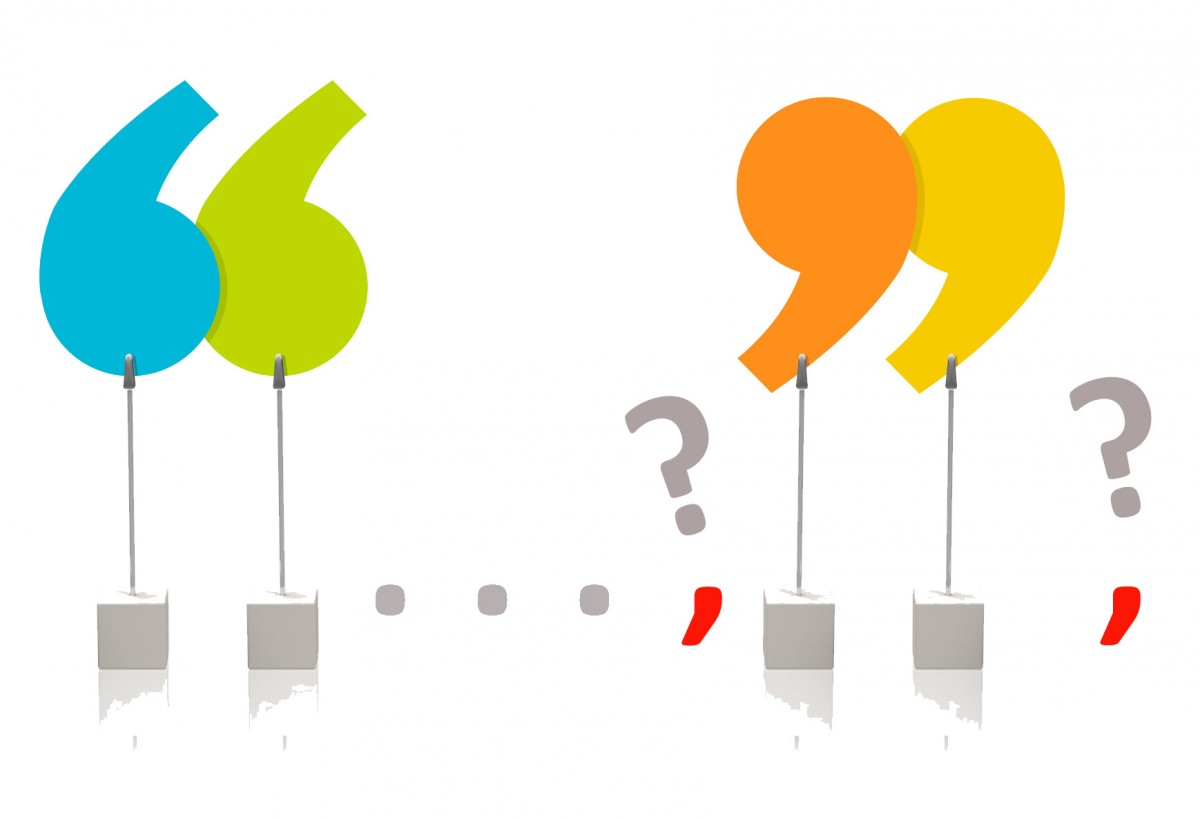30 September 2014

American English and British English differ in many niggling ways—some of which we addressed in our posting "International Quotation Differences," last 23 March. Those differences are even more pronounced when we consider the coupling of quotation marks with other punctuation marks at the end quotations.
- In BrE, a punctuation mark would never go inside a quotation unless it were originally part of that quotation.
- In AmE, a period or a comma always goes inside the close-quote mark. A semicolon and colon always go outside the quotation mark. A question mark or exclamation point goes either inside or outside, depending upon whether the quotation itself uses that punctuation.
But commandments, of course, are like pie crusts—often broken and sometimes with good reason. (And that, of course, is why EE 2.1, after encouraging users to learn the basic principles of our craft, adds: "We have both an artistic license and a researcher's responsibility to adapt those principles when the need requires it.")
Given that punctuation exists to enhance clarity, if the application of a rule creates ambiguity, then the rule has to be ignored. As writers, we have to thoughtfully consider whether standard AmE or BrE practice for periods and commas would best create clarity or confusion in situations of this type.
PHOTO CREDIT: Adapted by E. S. Mills from "The Quotation Marks," CanStockPhoto (http://www.canstockphoto.com/images-photos/quotation-marks.html#file_view.php?id=19494880 : downloaded 15 September 2014), uploaded by deltaart; used under license.